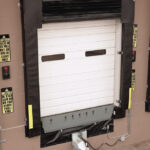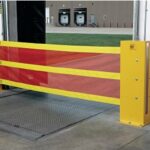Food poisoning is a serious problem. Each year, one in six Americans get sick, and an estimated 128,000 end up in the hospital each year due to food borne illnesses. In some cases, food poisoning leads to serious long-term effects and death. In fact, the Centers for Disease Control estimate that roughly 3,000 people die annually due to food borne illnesses.
One place where contamination might occur is the warehouse or similar food-handling facilities. You do not want your warehouse to be the culprit of a widespread food poisoning incident. The best way to combat food poisoning is prevention through implementing rigid warehouse food safety guidelines that keep your business in compliance.
FDA Regulations
In January 2011, the FDA enacted FSMA, or the Food Safety Modernization Act with the purpose to prevent food contamination in warehouses and other food-handling facilities. As part of the law, you must register with the FDA and develop a prevention plan that details all preventative actions. This information also includes your warehouse food safety plan for dealing with any potential contaminations and ways in which you train employees. Additionally, you must undergo inspections every three years. The law also gives the FDA power to recall any food they suspect of contamination or other issues.

Creating a Food Safety Prevention Plan
When creating your food safety prevention plan, you want to make sure that you follow the basics of cleaning, separating, cooking and cooling. You must maintain a sanitary and hygienic warehouse space, especially in the areas in which you handle and store the food. Certain items, such as raw meat, should be stored separately. As a warehouse, you might not be cooking items, but you do want to make sure that you keep the products cool when stored.
Knowing the right temperature for the type of products you store is a good place to start. Any dry, non-perishable foods such as canned goods and cereals do not require refrigeration. However, they do need the right surroundings:
- Dry with sufficient ventilation
- Temperature between 50 and 70 degrees Fahrenheit
- Away from heat and light
- Not touching the floor and walls
Foods that require refrigeration or freezing have similar requirements. You must maintain refrigerators at 32-40 degrees Fahrenheit, while frozen foods need to be under 0 degrees Fahrenheit. You must be able to easily see the temperature gauge and check it multiple times a day to ensure it remains at the right temperature. When placing the food in the refrigerator or freezer, remember to leave sufficient space for ventilation and air circulation.
How the Right Doors Improve Your Warehouse Food Safety
An important way to maintain the right temperatures is to have cold storage doors and/or freezer doors that have a strong seal so the cold air does not escape, and the hot air does not enter. However, you also want to have doors in place that are easy to open, and that open quickly, so you do not waste time and energy getting into the refrigerated areas.
W.E. Carlson provides a variety of products to enhance your warehouse food safety, including cold storage doors, high-speed doors, wash-down curtain walls, freezer doors and door seals. Contact us to discuss the right solutions for your warehouse.












